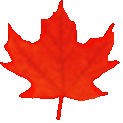
Common menu bar links
Institutional Links
-
Translation Bureau
Language Portal of Canada
-
TERMIUM Plus®
-
Chapters
- + Abbreviations
- + Hyphenation: Compounding and Word Division
- + Spelling
- + Capitalization
- + Numerical Expressions
- + Italics
- - Close Punctuation
- Introduction to Punctuation
- Spacing
- The Period, Main purpose
- Imperatives, exclamations and indirect questions
- Ellipsis points
- Leaders
- Other uses
- Periods properly omitted
- The Question Mark, Main purpose
- Requests, indirect questions and other uses
- The Exclamation Mark, Main purpose
- The Exclamation Mark, Miscellaneous
- The Comma, General
- Restrictive/non-restrictive
- The Comma, Co-ordinate elements
- Clarity and emphasis
- Omitted words
- Quotations, etc.
- Names and titles
- Dates, geographical names and addresses
- Commas properly omitted
- The Semicolon, Between independent clauses
- The Semicolon, Co-ordinate elements
- Misuse and overuse
- The Colon, Between independent clauses
- Annunciatory function
- The Colon, Miscellaneous
- Misuse
- Parentheses, General
- Clarification
- Punctuation with parentheses
- Afterthoughts and asides
- Parentheses within parentheses
- Legal documents
- Letters and numerals
- Square Brackets, General
- Use within parentheses
- Use
- Multiples
- The Em Dash, General
- Enumerations
- Interruptions, pauses, afterthoughts, clarifications and emphasis
- Summarizing
- Material in apposition
- Headings
- Lists and tables
- Punctuation with em dash
- The En Dash, Numerals
- Compound expressions
- Compound words
- Spelling and enunciation
- The Oblique, General
- Abbreviations
- The Oblique, Numerals
- Alternatives and headings
- Possession
- Inanimate possessors
- Compounds
- Two nouns (group genitive)
- Geographical names
- Institutions and organizations
- Its
- Contractions
- Plurals
- Vertical Lists, General
- Use of colon
- Numbering
- Use of semicolon
- Complete sentences
- Capitalization
- + Quotations and Quotation Marks
- + Reference Matter
- + Letters and Memorandums
- + Reports and Minutes
- + Usage
- + Plain Language
- + Elimination of Stereotyping in Written Communications
- + Geographical Names
- + Revision and Proofreading
- + French Typographical Rules
Proactive Disclosure
Important notice
The Canadian Style has been archived and won’t be updated before it is permanently deleted.
For the most up-to-date content, please consult Writing Tips Plus, which combines content from Writing Tips and The Canadian Style. And don’t forget to update your bookmarks!
Search and Functionalities Area
7.42 Interruptions, pauses, afterthoughts, clarifications and emphasis
Like parentheses, a dash may be used at the end of an unfinished or interrupted statement or a pause, as in transcripts:
- I have indicated that the appointment of the judge was terminated—or rather was not terminated but came to—
Some Hon. Members: Oh, oh!
Here the dashes are used to indicate, first, a pause and clarification and, second, an interruption.
The dash may be used to introduce an afterthought, correction or repetition:
- Who will oppose—who are now opposed to the union?
It may similarly be used to set off an emphatic ending or one that contrasts with the remainder of the sentence:
- To write imaginatively a man should have—imagination.
Dashes give greater emphasis to parenthetic material than do commas or parentheses. If the parenthetic material contains internal punctuation or forms a complete sentence, the commas that might have been used to enclose it should be replaced by dashes or parentheses, depending on the degree of emphasis desired or the closeness of the relationship to the rest of the sentence. Parentheses are generally used to enclose material more remote from the main thrust of the sentence, dashes for material more closely related:
- This country is something that must be chosen—it is so easy to leave—and if we do choose it we are still choosing a violent duality.
—Margaret Atwood
The em dash is also used to attribute a quotation, as in the example above.
© Public Services and Procurement Canada, 2025
TERMIUM Plus®, the Government of Canada's terminology and linguistic data bank
Writing tools – The Canadian Style
A product of the Translation Bureau


